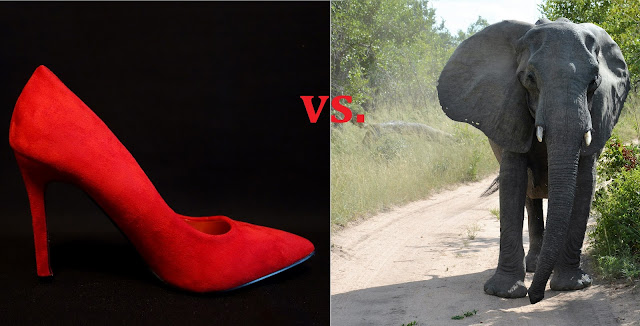 |
| Illustration Created Using Public Domain Photos |
By Andrew Bennett
Forces and Pressure in Physics Problem
Which would be worse: Having your foot stepped on by an elephant or by a woman wearing stiletto heels? Although the force from the elephant will certainly be larger, it might also be worth considering the amount of pressure on your foot. By this measure, you might be better off with the elephant!**Important warning: Do not tell any woman you know that you'd rather have an elephant step on your foot than her. No amount of physics will get you out of a mess like that!**
Forces and Pressure in Fluids
When we move from solid objects to fluids (liquids and gases), all of the same rules of physics still apply. We sometimes have some work to do to convert those rules to a form that we can make calculations and predictions with.What Is Pressure?
When dealing with solid objects, it was easy to identify individual forces that act at single locations. With fluids, however, those forces tend to be distributed over surfaces. Rather than work with each of these individual forces, we find it useful to define the term pressure as the ratio of the total force applied to a surface divided by the area over which that force acts. This can be written as:In this video, we will practice making conversions between forces and pressure, as well as working with some of the units that are used for pressure, such as pascals and psi. We also will determine the answer to the elephant vs. stiletto question.
If viewing via email, click here to see the video.
Subscribe for More Physics Tutorials
You can subscribe to this blog here and to my YouTube channel here. Thank you for your support!

Comments
Post a Comment